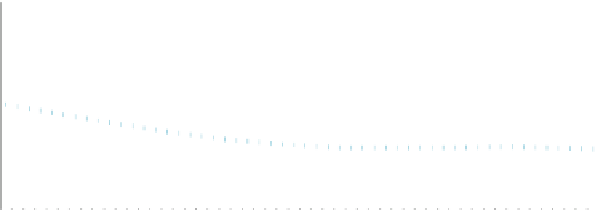Agriculture Reference
In-Depth Information
90
80
70
60
South Africa
Brazil
China
India
Russian Federaon
50
40
30
20
10
0
Fig. 6.25 Rural population (% of total population) among BRICS countries
The percentage of employment in agriculture is lower in South Africa and the
Russian Federation and higher in India (about 50 % in recent years) and China
(Fig.
6.23
). This is more or less in accordance with other previous accounts made
before for other variables.
The unemployment rate may aggravate economic performance, namely for
South Africa which presents values for this variable of about 25 % since 1998
(Fig.
6.24
). India and China are the countries with a lower level of unemployment.
The case of India may be explained by the weight of agriculture in the economy.
The rural population (Fig.
6.25
), in 2012, was about 70 % in India, 50 % China,
40 % South Africa, 25 % Russia, and 15 % Brazil.
4 Results
The following Tables
6.1
and
6.2
show the results obtained for each BRICS
country, using statistical information from 1961 until 2012, taking the function of
production as a base (Cobb and Douglas
1928
), where the dependent variable is the
agricultural output (represented by the Agricultural value added in percentage of
the GDP) and the independent variables are those which were previously analyzed.
All the estimations were made with the Stata (
2014
) software and through the time
series econometric techniques.
The results in Table
6.1
are relative to the estimations made before and the
results in Table
6.2
were obtained in regressions made after to try and solve the
problems identified by the “Ramsey RESET test using powers of the fitted values”
related with the lack of variables in the model of some BRICS countries, namely
South Africa, Brazil, China, and India.
In Table
6.1
the statistical tests “Augmented Dickey-Fuller test for unit root” and
“EG-ADF test for co-integration” reveal no complications with the unit roots and
with the co-integration of the variables in the models. The autocorrelation tests,
namely “Portmanteau test for white noise for autocorrelation,” “Durbin's alterna-
tive test for autocorrelation,” and “Breusch-Godfrey LM test for autocorrelation”
reveal some problems with this statistical infraction and therefore the “Prais-
















































Search WWH ::

Custom Search